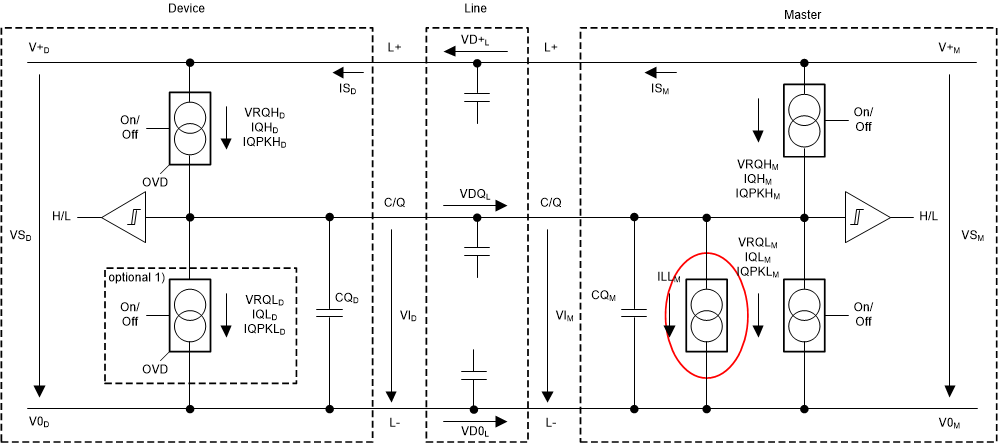TIDUEB8C July 2018 – March 2021 TPS274160
- Description
- Resources
- Features
- Applications
- 5
- 1System Description
- 2System Overview
- 3Hardware, Software, Testing Requirements, and Test Results
- 4Design Files
- 5Software Files
- 6Related Documentation
- 7About the Author
- 8Revision History
2.3.2 Current Sink
Beside the wake-up pulse, the master PHY has a second important difference to the device PHY shown in Figure 2-8. It has to include a current sink. Since the TIOL111 device does not include this in the chip, it is implemented on the board.
 Figure 2-8 Block Diagram IO-Link® System
Figure 2-8 Block Diagram IO-Link® SystemAs the excerpt of the specification in Table 2-3 shows, the current has to be between 5 mA to 15 mA.
| ILLM | Load or discharge current for: 0 V < VIM < 5 V 5 V < VIM < 15 V 15 V < VIM < 30 V |
0 5 5 |
N/A N/A N/A |
15 15 15 |
mA mA mA |
Implementing such a small and tolerable current sink that is only active when the transmitter is disabled can be done with a simple NPN transistor.
 Figure 2-9 Simple Current Sink
Figure 2-9 Simple Current SinkFigure 2-9 shows the schematic. The current sink is controlled by the TX line coming from the MCU and going to the TIOL111 device. Since the logic of the TIOL111 device is inverting and the default level on the TX line is high in idle state, this will enable the current sink whenever the driver is disabled or transmitting a 0 V on the CQ line. So it does not increase the current consumption in normal operation.